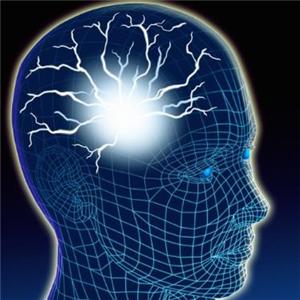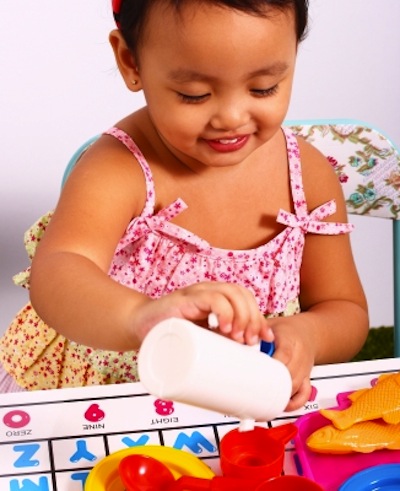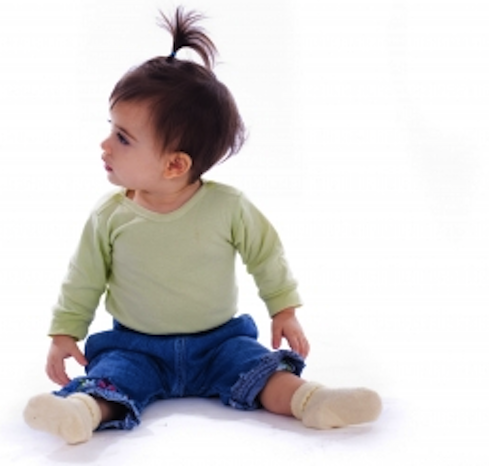Baby Development: What to Look for in Babies 4-7 Months
When your baby hits four months, they’ll begin to go through all sorts of physical and mental growth. From new movements to name recognition, you’ll be amazed at the baby development that your little one goes through in a few short months. MomTrusted has summarized a few exciting milestones to keep an eye out for:
Physical developments
Babies will develop remarkably in physical ways during this stage of growth. Some typical physical developments include:
-The ability to roll right to left
-Some may even develop the ability to roll over to their stomachs
-Color vision
-Clearer vision in general
-Sitting with support and possible on his or her own
-The ability to put support on his or her legs
-Reaching
-Grabbing and transferring with alternating hands
-Raking, or pulling items closer
Mental developments
In addition to going through some big physical changes during these three months, babies will also have tons of new information shaping their minds. Here are some of the cognitive developments that you can expect:
-Spotting covered, “hidden” objects
-Starting to understand and respond to words like “no” and his or her name
-Can keep an eye on moving objects
-Beginning to recognize emotion in voices
-Responding to sounds with his or her own baby noises
Social, language and emotional developments
Finally, between four and seven months, babies will begin to grow socially and emotionally, starting with very small, but powerful signs including:
-Babies’ language skills will increase through babbling consonants.
-He or she will begin to interact with you or others through the form of play.
-Babies start to see, recognize and enjoy their own reflections.
-Not only will babies begin to recognize emotion through voice, but they’ll respond to others’ emotions, often by imitating them.
Sources:
-“Growth and Development Milestones: 4-7 months” parents.com
-“Infant Development: Milestones 4 to 6 Months” Mayo Clinic
-Photo courtesy of magerymajestic/freedigitalphotos.net
Spotting Warning Signs of Autism
While each child is different and develops at a different pace, it’s important to compare what your child is going through to what’s normal. An abnormality may indicate autism. The earlier a developmental delay is identified, the better chances, depending on the level of autism, your child has of integrating into regular school programs. There is growing evidence that shows intervention during preschool or earlier has the largest impact on autistic children. Here are some things to keep an eye out for:
Early signs in infants
Even though autism is usually diagnosed between the ages of 2 and 3, there are earlier signs to keep an eye out for, even in infants. If your baby rarely smiles when you approach or smiled at, that may be a sign of a developmental delay.
Most babies are babbling and making repetitive sounds by the time they’re 6 months old. Between 6 months and a year, they should start responding to their name. If your child does not seem to be making these noises or responding to their name, they may and early signs of developmental delays.
Lack of eye contact
One of the most common signs of autism is a lack of eye contact. This sign can sometimes show in infants, but as your child grows into a toddler, if you notice a lack or avoidance of eye contact, you should look into possible autism immediately.
Unusual physical movements
In as early as infancy, autistic children may move differently that those without autism. They may stiffen their limbs, or make repetitive motions with their hands. As they get older, these movements will often continue.
Unusual communication skills
Kids with autism often show abnormalities communicating early on. They may not respond appropriately in conversation with peers, struggle alone instead of asking for help or show a smaller variety of vocabulary words than their peers.
Sources:
-Wetherby, Amy. “Infant Toddler Checklist.” Communication and Symbolic Behavior Scales Developmental Profile.
-“10 early warning signs of autism.” CBS News.
-Warner, Jennifer. “Cues May Signal Autism in Toddlers.” WebMD.
-Photo courtesy of Stuart Miles/freedigitalphotos.net
Motor Skill Milestones
From only a few months old, babies will begin to develop motor skills. At first they’ll grab and giggle, but soon, they’ll begin to move their entire bodies.
Remember that each baby develops at his or her own pace so don’t panic if your child varies. However, if this is an ongoing trend you should ask your pediatrician about it just in case there are developmental delays.
Here are some key motor skill milestones to prepare for:
Rolling over
Around the same time that your baby is learning to sit on his or her own, they’ll learn to roll over. You’ll start to see your baby lift head and shoulders high, using arms in what looks like imitation pushups. Eventually, at as early as four months, your little one may be able to roll over from belly to back. But don’t worry if it takes another month or two to reverse the motion.
Crawling
Crawling typically starts to take place between six and 10 months. Likely signs that crawling is coming is if your baby starts repositioning his or herself from sitting up to hands and knees. You also may see some scooting, a sign of attempted movement. At first, babies may use the right leg and arm at the same time, but they’ll quickly learn that using the left arm with the right leg is much steadier and more efficient. Crawling gives babies an opportunity to explore the world around them.
Standing
After babies master crawling, they will begin to stand, not on their own at first, but while holding onto you or other objects for support. Babies are normally proficient standers by around nine months. Standing is an exciting sign because it’s the first step to walking.
Walking
Arguably one of the most exciting motor skill milestones, walking typically begins by holding onto objects and inching along. Most babies begin to walk on their own at around one year, but don’t begin to use more finely tuned motor skills, like walking backwards, until around 15 months.
Sources:
-“Developmental milestones: Rolling over.” Baby Center.
-“Baby physical and motor skills.” Baby Zone.
-“Baby Milestones.” Parenting.com.
-“Developmental milestones: Crawling.” Baby Center.
-“Milestone chart: 7-12 months.” Baby Center.
-Photo courtesy of photostock/freedigitalphotos.net
Under Construction: Your Child’s Brain

Babies are born with their brains literally still under construction. While they have the majority of the building materials already on site the construction of the elegant and complex pathways of the brain are still very much in process. Babies are born with roughly 100 billion neurons already in place. Most of these neurons have not been ‘connected’ meaning they have yet to form into the useful pathways that enable vision or language. These connections are formed over the first ten years of a child’s life. More importantly, the brain develops in predictable stages based on the chemical changes occurring in the brain at that time. Because these stages are predictable scientists and developmental psychologists have been able to identify “prime times” for specific development activity and learning.
A recent publication by Judith Graham and Leslie A. Forstadt of the University of Maine detailed these prime times, what’s happening, and what a parent can do to support. Here is brief summary of their findings:
Helping your child’s vision
– From birth to age 6 a child’s vision is developing. There is a peak in development between ages 1 and 3.
– Babies, when born, can see clearly objects that are 8-10 inches away from their face. Over time they begin to develop greater depth perception.
– Eye exams are the biggest help a parent can give. If problems go uncorrected the neural pathways could lose functionality.
Helping your child’s feelings
– Emotions are a complex development process lasting through about age 10.
– The first emotions the brain builds are calm and distress at about 2 months these emotions begin to develop into more layered feelings.
– You can help nurture your baby’s emotional development by providing a structured and supportive environment. Simple things like expressing joy, providing routine, and positive discipline help your child develop robust and healthy emotions.
Helping your child’s language
– Language skills begin developing at birth and grow through age 7. Vocabulary specific development starts at age two and continues into adulthood
– The first 6 years are critical for brain development to understand, recognize, reproduce language.
– Talking to your baby is the most important thing you can do. Continually share your language and vocabulary with your child. As a baby the singsong talk is especially helpful in helping babies learn new words.
Helping your child’s motor skills
– A baby’s motor skill development starts with the large muscle groups and refines to smaller muscles from there.
– The basic motor skills (arms, legs, back, etc) start at birth, with fine motor development starting around 6 months old.
– Motor skills are refined primarily over the first 4 years of a child’s development
– You can help your baby’s motor skill development by having age and stage appropriate activities available. For example drawing with crayons or painting helps with fine motor skills while having reaching for objects helps large motor and hand eye coordination in younger babies.
Your child is equipped from the day she or he was born with all the tools needed to develop and grow into an amazing person. Understanding how your child develops will help you provide the best environment possible to stimulate those 100 billion neurons.















